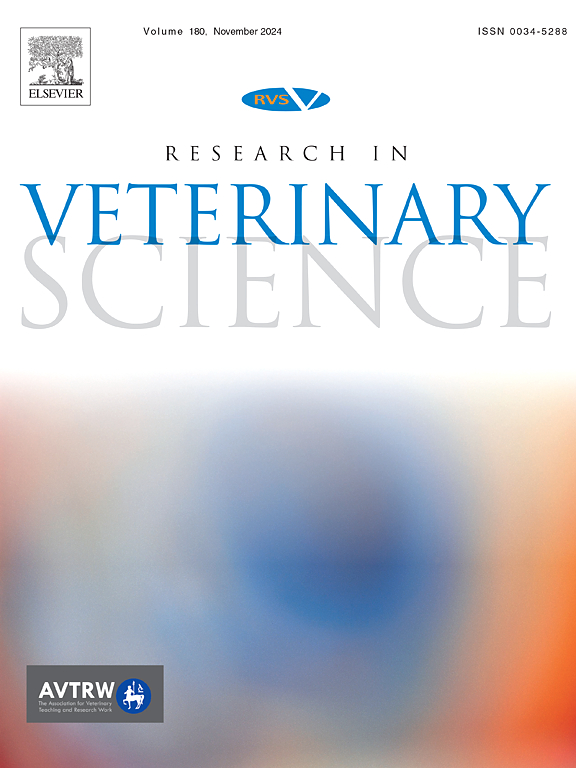Differential expression of prostatic androgen receptor and alpha-smooth muscle actin in castrated and non-castrated dogs
IF 2.2
3区 农林科学
Q1 VETERINARY SCIENCES
引用次数: 0
Abstract
The prostate, the only accessory sex gland in dogs, is androgen-dependent and has a vital influence on male fertility. Either for therapeutic or preventative purposes, orchidectomy is performed in both human and animal, especially for androgen-dependent disorders. Thereby, the current study aimed to evaluate the immunohistochemical characteristics of the canine prostate gland after unilateral and bilateral orchiectomy. Primarily, twenty-one healthy male dogs of 18–20 kg and 1–2 years were divided into three main groups; control, unilateral castrated and bilateral castrated groups. The last two groups were subdivided, based on post castration time, into three subgroups; 10, 20, and 30 days. The prostatic tissues were harvested from all experimental groups for immunohistochemical studies. The results revealed progressive significant alterations in the prostate gland immunostaining affinity after bilateral castration as time passed; gradual reduction in the androgen receptors and α-SMA immunoexpression was observed. On the contrary, the unilateral procedure conserves the prostatic tissue nearly similar to the control. It was concluded that, however, immunohistochemical characteristics of prostatic tissue were maintained without detectable changes after unilateral castration, there was a marked ongoing decrease of androgen receptors and α-SMA immunoreactivity post bilateral castration procedure.
求助全文
约1分钟内获得全文
求助全文
来源期刊

Research in veterinary science
农林科学-兽医学
CiteScore
4.40
自引率
4.20%
发文量
312
审稿时长
75 days
期刊介绍:
Research in Veterinary Science is an International multi-disciplinary journal publishing original articles, reviews and short communications of a high scientific and ethical standard in all aspects of veterinary and biomedical research.
The primary aim of the journal is to inform veterinary and biomedical scientists of significant advances in veterinary and related research through prompt publication and dissemination. Secondly, the journal aims to provide a general multi-disciplinary forum for discussion and debate of news and issues concerning veterinary science. Thirdly, to promote the dissemination of knowledge to a broader range of professions, globally.
High quality papers on all species of animals are considered, particularly those considered to be of high scientific importance and originality, and with interdisciplinary interest. The journal encourages papers providing results that have clear implications for understanding disease pathogenesis and for the development of control measures or treatments, as well as those dealing with a comparative biomedical approach, which represents a substantial improvement to animal and human health.
Studies without a robust scientific hypothesis or that are preliminary, or of weak originality, as well as negative results, are not appropriate for the journal. Furthermore, observational approaches, case studies or field reports lacking an advancement in general knowledge do not fall within the scope of the journal.
 求助内容:
求助内容: 应助结果提醒方式:
应助结果提醒方式:


